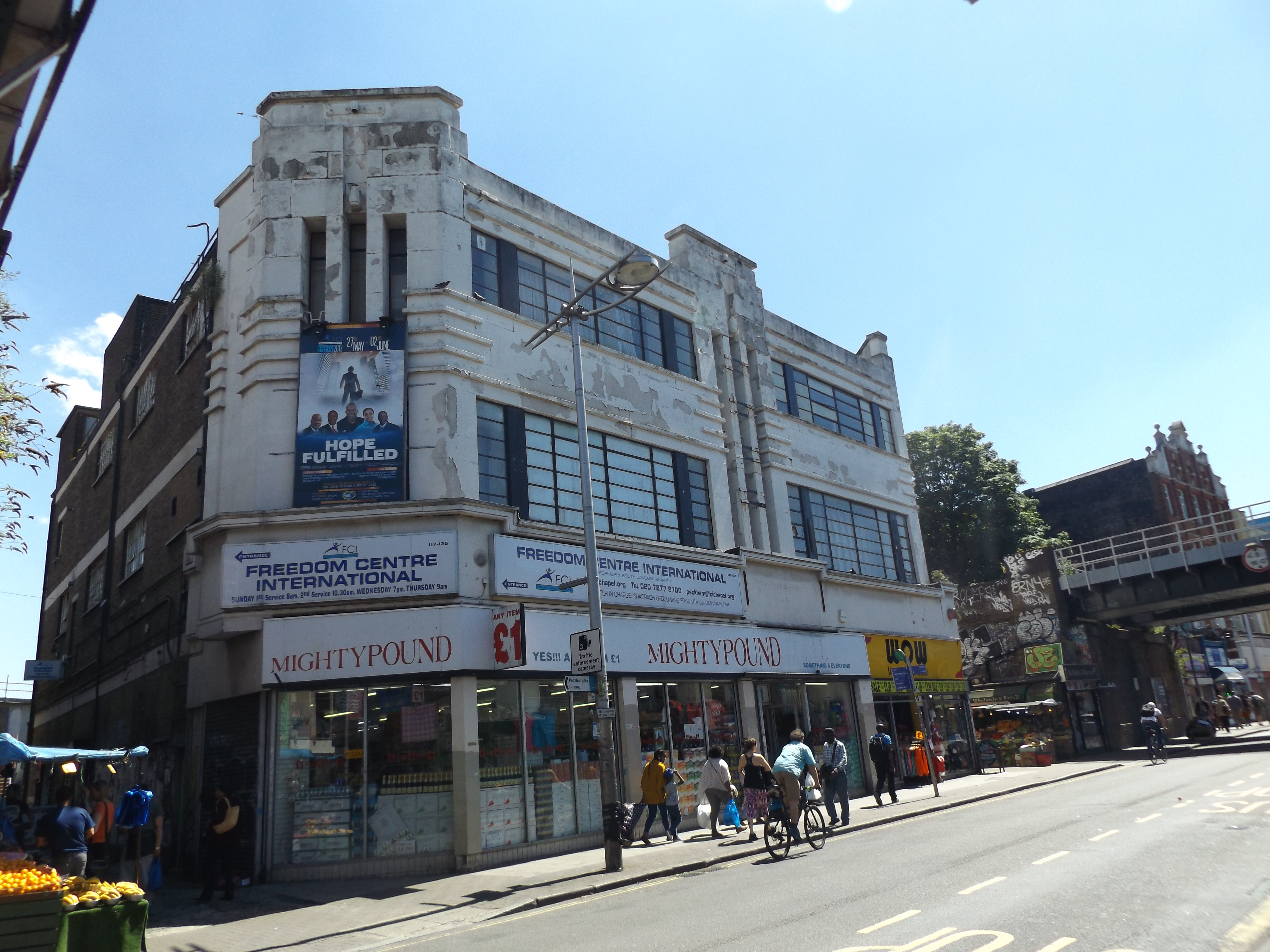117 – 125 Rye Lane

There is a certain mystery about the building at this address. In the Dec 2014 issue of The Peckham Weekly, (p.8) Benny O’Looney proclaimed it as part of the art deco development of 1935 surrounding Peckham Rye Station, designed by Southern Railway Architects under the direction of James Robb Scott (1882-1965). And I find no reason to doubt this attribution, there being obvious features in common across the group of buildings. I agree too that it is “the most prominent member” of the group, a fine building worthy of a great architect. This is supported by the shape of the building, in place opposite the station, complete with chamfered corners on the front, west elevation, shown on the OS map of 1937.
But if you then go to the unimpeachable Historic Area Assessment of Central Peckham prepared by Joanna Smith and Johanna Roethe of English Heritage you will find it described as part of a piecemeal rebuilding of individual premises on Rye Lane around 1949, “occupied from the outset by a second branch of C&A (Modes)” (p.43, my italics). This is, I think, somewhat qualified on page 108, the report having previously conceded that its art deco treatment “seems rather old fashioned for its date”. This suggests that the building was otherwise occupied between 1935 and 1949.
Turning therefore to the Post Office street directories, I found that prior to 1935 numbers 117-125 were part of Holdron’s department store, whereas in 1936, presumably in the new building, business was transacted by Henry’s Stores, drapers, and in 1937 to 1939 by Kingsword & Marle Ltd, furniture manufacturers. The mysterious thing is that through the war years and beyond to 1950, despite the annual directories continuing to be published, there is no listing for numbers 117-125. Perhaps there was a security reason for not advertising what went on in that part of Rye Lane? It is beyond most memories, but it would be interesting if anyone can throw light on this period.
Perhaps it doesn’t matter? Most elderly people remember the building as a typical C&A store, and this is the photographic evidence: a huge property with an impressive frontage, well-maintained. There is no argument about its destiny: its closure in January 1987, an early casualty which would see the entire withdrawal of the company from the United Kingdom by 2001 (though still flourishing elsewhere). In 1998, the South London Temple, a Pentecostal church, moved into the upper floors, and independent retail outlets now trade from the ground floor. The huge building remains structurally intact, but inferior graffiti despoils the side and back walls, and the paint is peeling from the beautiful frontage, its fine architectural features obscured by over-painting, gaudy panels and crude shop fronts. “Tacky” is how one website has described it.
However it is remediable and this building is eligible to receive funding towards its restoration through the Peckham Townscape Heritage Initiative. Whether Network Rail, its current owners, will seize this opportunity, remains to be seen.
Derek Kinrade – February 2018

